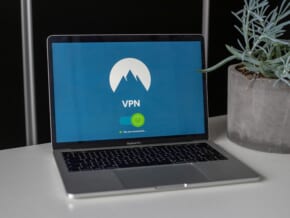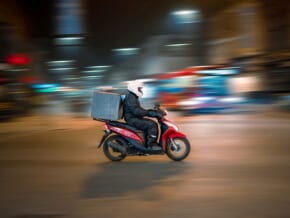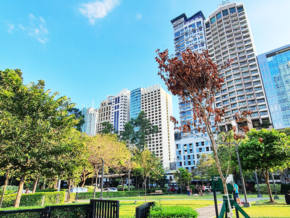Expats’ Guide: Riding a Taxi in Metro Manila
Updated as of December 11, 2023.
Riding a taxi is one of the more convenient ways to get around Metro Manila, the country’s sprawling megalopolis. If you don’t like standing on the bus or sitting in a non-air conditioned vehicle, then this is for you. It also saves you from falling in line at a crowded station during rush hour. This time, we’re here to give you tips on how to ride a cab in Metro Manila for your own safety and convenience.
 IMAGE from Pexels
IMAGE from Pexels
Types of Taxi
Regular/White-Metered Taxis: Regular or white-metered taxis are the common ones we see on the road and are the most affordable option at Ninoy Aquino International Airport (NAIA). They operate under LTFRB approval, not MIAA accreditation, so passengers need to exercise extra caution. The flag-down rate is Php 45, with additional charges of Php 13.5 for every succeeding kilometer and Php 2 for every minute of travel time. Unfortunately, the 20% discount for senior citizens, persons with disabilities, and students does not apply to regular metered taxis. These are found in the following terminals:
1. Terminal 1 – Arrival Curbside
2. Terminal 2 – Arrival Curbside near Bay 23
3. Terminal 3 – Arrival Curbside across Bay 13
4. Terminal 4 – Departure Curbside
Yellow Metered Taxis: They are more expensive than regular ones but are MIAA-accredited, operating to and from the airport. Despite the higher fare, passengers benefit from shorter lines and a more reliable ride. The base fare is Php 75, with additional charges of Php 4 for every succeeding 300 meters and Php 4 for every two minutes of travel time. The 20% discount for eligible passengers is applicable to yellow metered taxis (ONLY applicable to Filipino passengers). These are found in the following terminals:
1. Terminal 1 – Arrival Curbside, Arrival Extension
2. Terminal 2 – Arrival Curbside near Bay 14
3. Terminal 3 – Arrival Curbside across Bay 8
4. Terminal 4 – Arrival Curbside
Coupon Taxis: Coupon taxis, also MIAA-accredited, offer fixed fares to specific destinations without using taxi meters. This eliminates concerns about overcharging. For example, the fare to Pasay is Php 150 – 440, Makati is Php 330 – 440, and Taguig is Php 330 – 530. And just like white- and yellow-metered taxis, 20% discount for eligible passengers is applicable to coupon taxis (ONLY applicable to Filipino passengers). These are found in the following terminals:
1. Terminal 1 – Arrival Curbside, Arrival Extension
2. Terminal 2 – Arrival Curbside near Bay 11
3. Terminal 3 – Arrival Curbside across Bay 6
4. Terminal 4 – Arrival Curbside
Note: Don’t get ripped off. Although this is being practiced by cab services (hotels, airport, etc.), regular metered taxis are not allowed to do this. Check this website for an estimate of your fare: numbeo.
Tips and Tricks
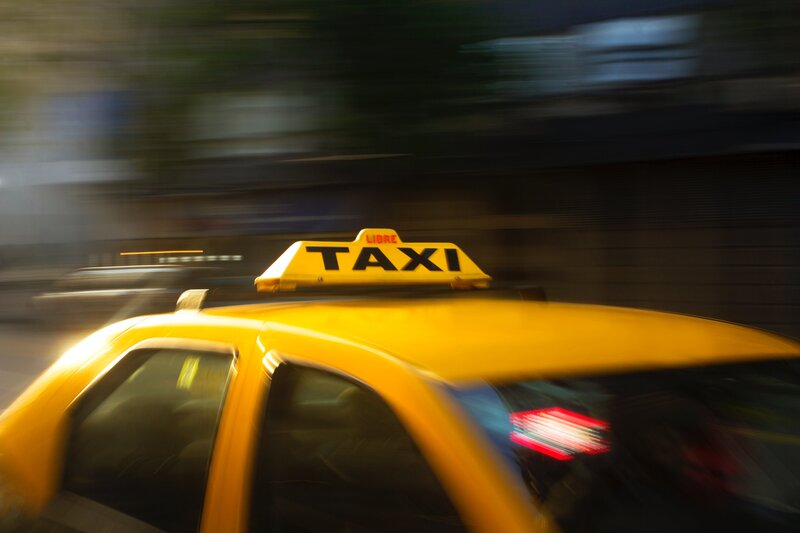 IMAGE from Pexels
IMAGE from Pexels
Here are tips you can follow to make your taxi rides in the Metro more enjoyable and secure.
1. When hailing a taxi, opt for well-known companies or those with visible identification. Look for distinct markings and signage to ensure the legitimacy of the cab.
2. Before getting into the taxi, ensure the meter is functional and ask the driver to use it for fare calculation. This helps avoid potential negotiations and ensures a fair and transparent pricing system.
3. When flagging down a taxi, do so in well-lit and populated areas, especially during nighttime. Avoid hailing cabs in secluded or poorly lit locations for safety reasons. Also, make sure to lock the doors once you get inside the taxi for additional protection against snatchers and other petty criminals lurking nearby.
4. Before entering, take note of essential details such as the license plate number and the driver’s name, usually displayed inside the taxi. This information can be useful for reference or safety purposes.
5. In Japan, taxi doors can be automatically opened and closed by the driver using a button. Some Japanese wait for the door to open by itself, and sometimes, they even leave it open when getting out. This is different from many other countries, including the Philippines, where passengers usually open and close taxi doors on their own.
6. Have smaller bills ready to avoid any challenges with change. Taxi drivers may not always have sufficient change for larger bills.
7. Stay vigilant and be aware of your surroundings during the ride. If you feel uncomfortable or encounter any issues, don’t hesitate to note the taxi details and contact the Land Transportation Franchising and Regulatory Board (LTFRB) hotline, typically displayed in the taxi.
8. If you are riding alone, stuck in traffic, or feel that you are getting lost – talk to the driver. This will help make you feel more relaxed. Some of them have interesting stories to tell. If you still don’t feel at ease, text your friends. You can also send them the taxi’s plate number for precautionary measures.
9. While not obligatory, learning basic local phrases can be helpful, especially if the driver is not fluent in English. Simple greetings and common phrases can enhance communication.
10. It pays to be familiar with landmarks and streets close to your destination because the driver might not be familiar with it. This also gives you the chance to consider beforehand if you want to take the Skyway or tollway. Cab drivers will ask you to decide on this. Prepare extra change just in case.
Using Grab and other TNVSs
 SCREENSHOT from Grab
SCREENSHOT from Grab
Consider using Transport Network Vehicle Service (TNVS) applications like Grab for added convenience and security. These apps provide upfront pricing, driver information, and the ability to share trip details with someone for safety. To start, download the Grab app from your smartphone’s app store and set up an account with your details. Once registered, input your destination, and the app will show you available nearby drivers along with the estimated fare. Select your preferred ride option, such as GrabCar or GrabTaxi, and confirm your booking. You can track the driver’s location in real-time and receive details about the vehicle and driver, ensuring a safe and secure ride experience.
When it comes to payment methods, Grab in the Philippines offers various options. Cash payment is widely accepted, allowing you to pay the driver in local currency upon reaching your destination. Additionally, Grab also provides a cashless payment feature through GCash, credit/debit cards linked to your Grab account. This adds flexibility for tourists who may prefer not to carry large amounts of cash. By using Grab, tourists in the Philippines can enjoy the ease of getting around, transparent fare calculations, and multiple payment options tailored to their preferences.
Know Your Rights
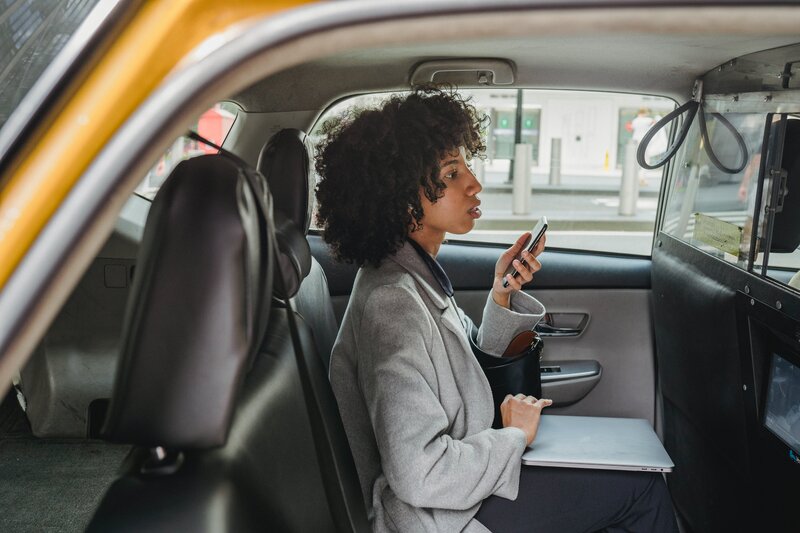 IMAGE from Pexels
IMAGE from Pexels
Remember that as a passenger, you have the rights to:
• be picked up and transported to their stated destination by any available on duty taxi driver, subject to applicable traffic regulations;
• a fare meter duly calibrated and sealed by proper authorities;
• a properly dressed and courteous driver who provides assistance, if requested;
• travel with an assistance dog or portable mobility aid;
• a taxi that is clean, smoke free, and in good repair;
• direct the route, or expect the most economical route;
• see the taxi meter;
• refuse multiple hiring (This is when two or more parties engage the same taxi for hire at the same time and are travelling in the same general direction);
• have the air conditioning on or off;
• see the driver’s identification card, which shall state clearly the driver’s name and the taxi operator’s name, place of business, and contract numbers, and shall contain a picture of the driver. Copies of such identification card shall be displayed prominently inside the taxi;
• see the plate number of the taxi and emergency numbers for assistance by the Philippine National Police (PNP) prominently displayed on the side doors and other conspicuous places within the taxi;
• a quiet atmosphere, upon request;
• pay the rate exactly as posted in the meter, subject to other government sanctioned fees; and
• a detailed receipt.
While Senate Bill No. 730, also known as the Bill of Rights of Taxi Passengers, is still awaiting approval, you have the option to file a complaint with the LTFRB if you encounter any unpleasant incidents on the road. Here are the numbers that you can contact in case you encounter problematic drivers during your stay in Metro Manila:
Tourist Assistance Call Center: 151-TOUR (151-8687) or 0995-835-5155
Metropolitan Manila Development Authority: 136 (You may dial the hotline in your phone.) or 0956-6632-221 (Viber)
Land Transportation Office: 8888 (You may dial the hotline in your phone.)
LTFRB: 1342 / Public Assistance & Complaints Desk: 426 2515 and 426 2534 (You may dial the hotlines in your phone.)
Keep these tips in mind to get the most out of your cab experience as you explore the Metro, Primer readers!





